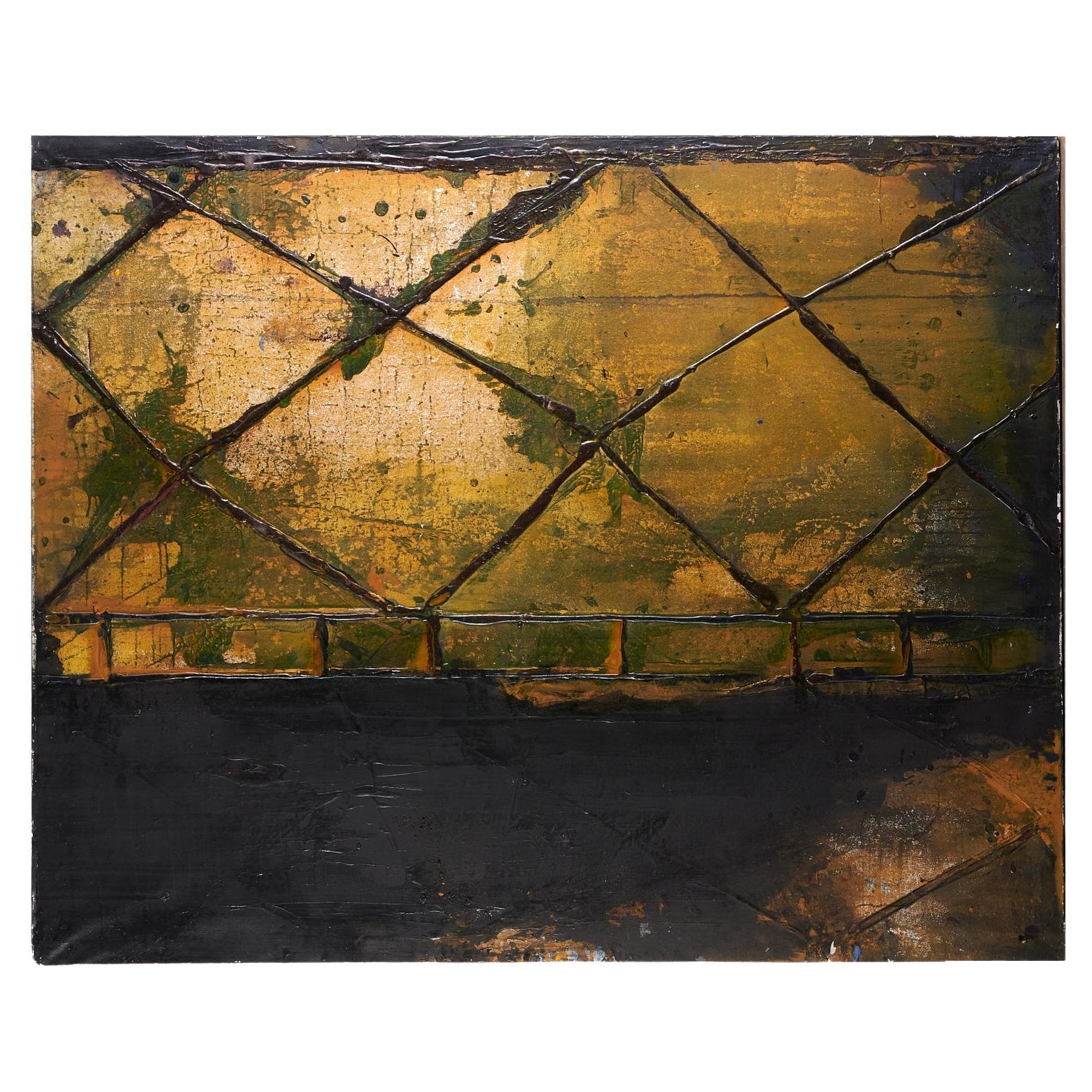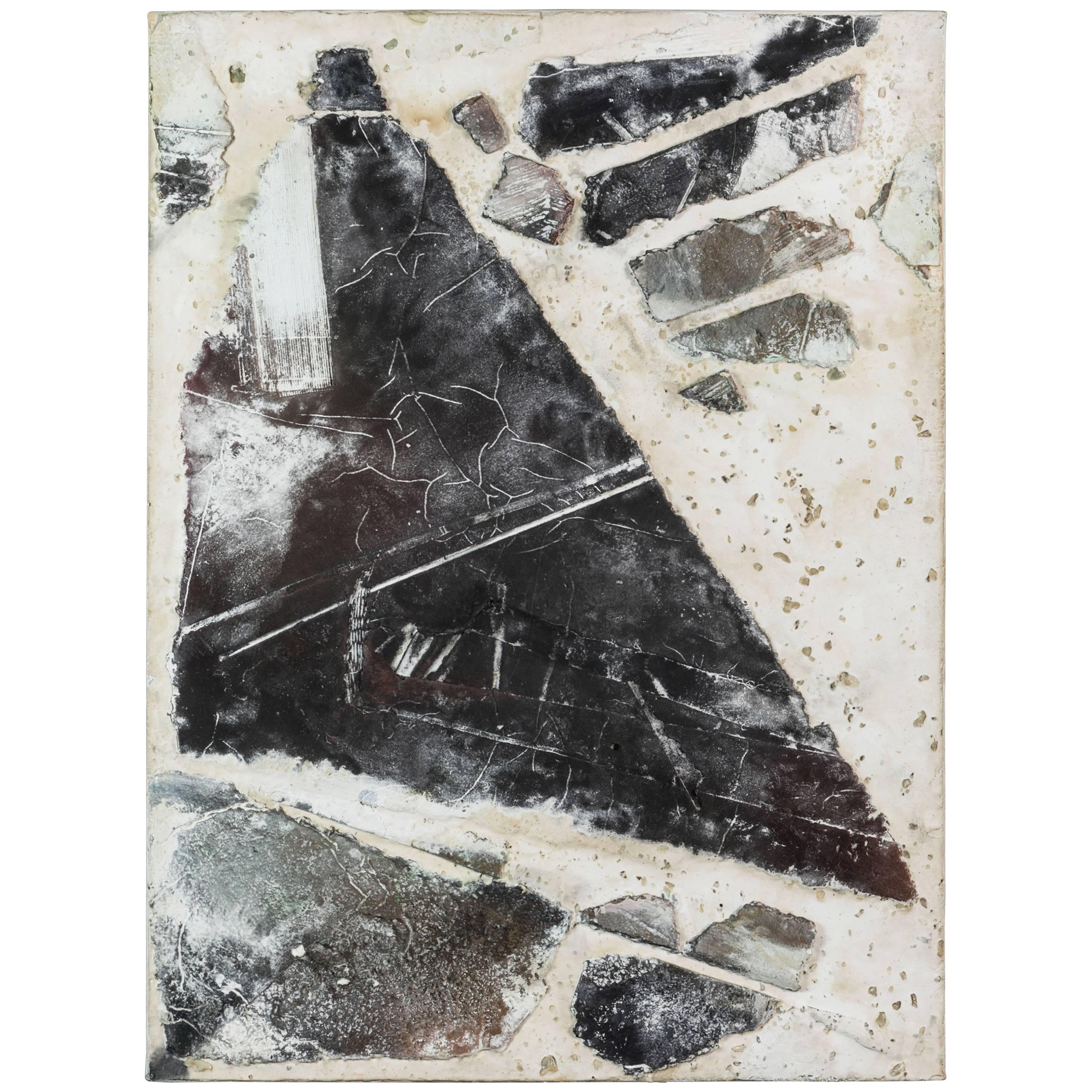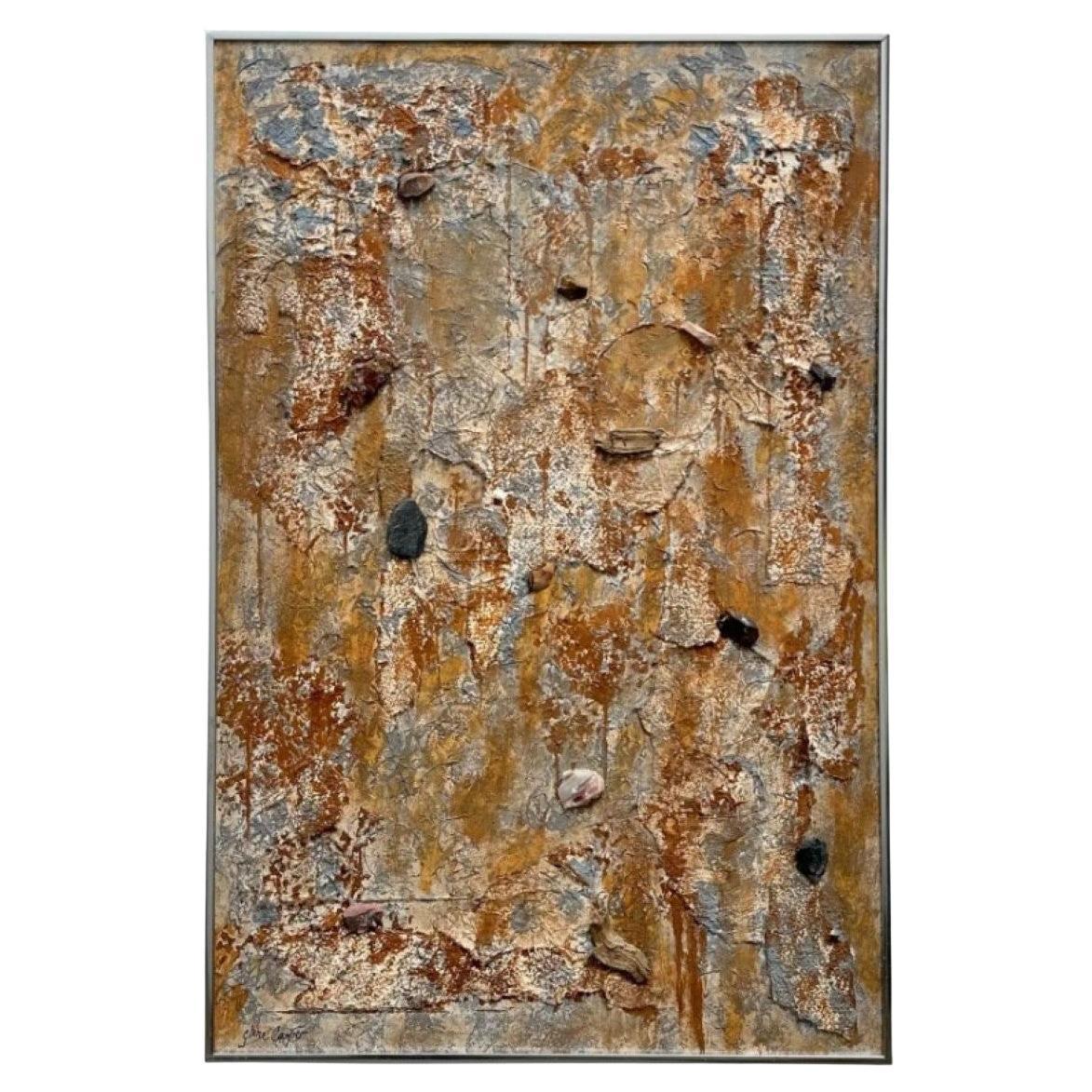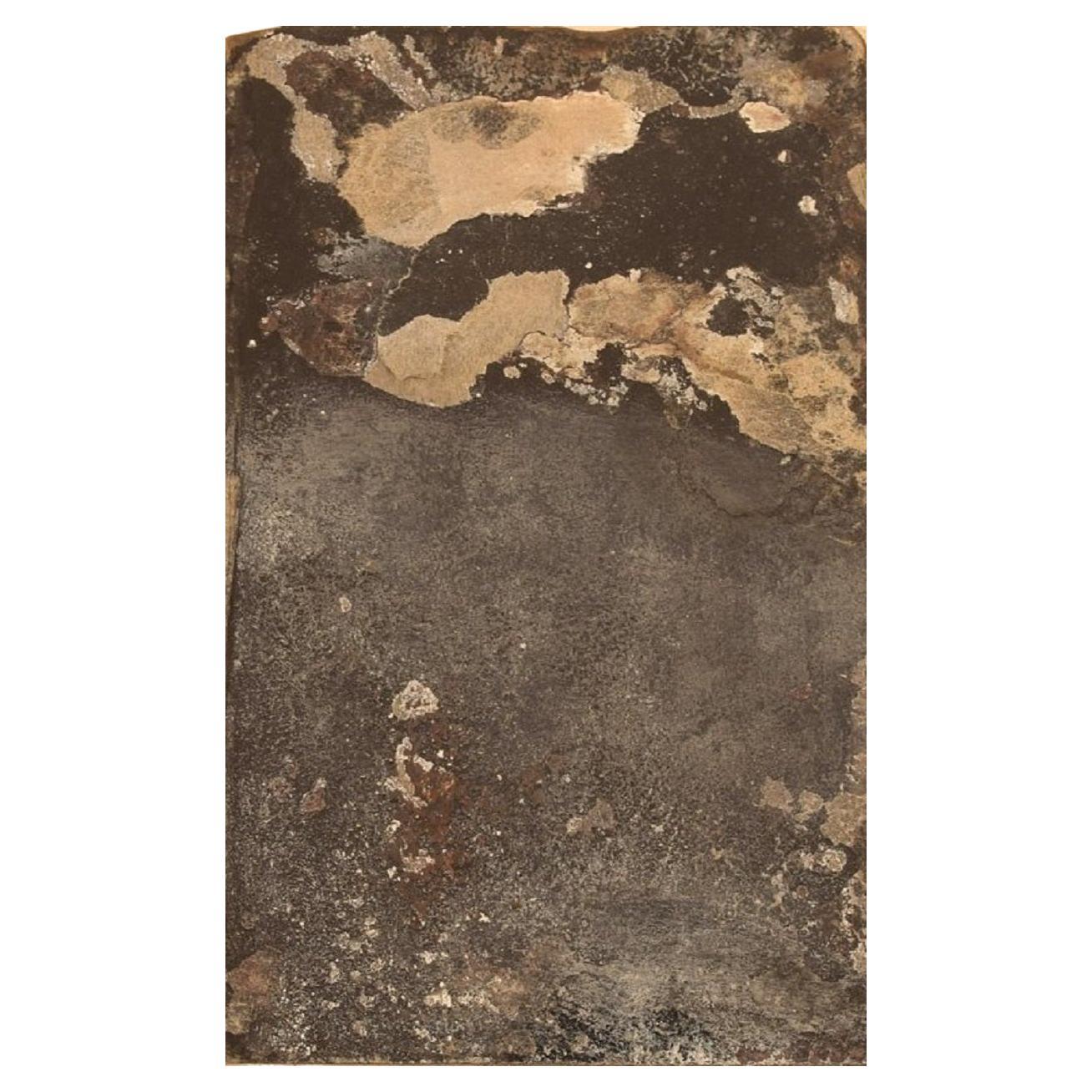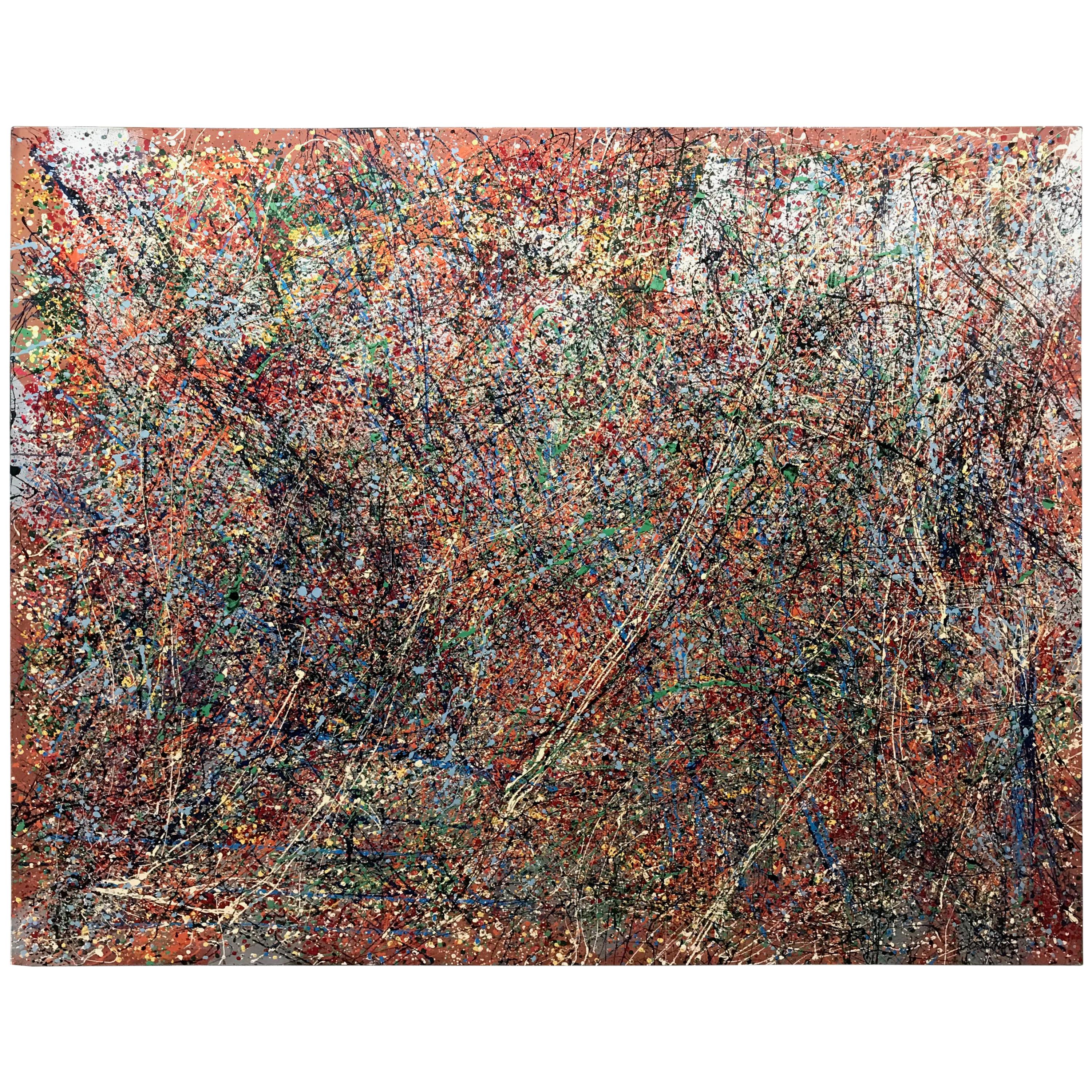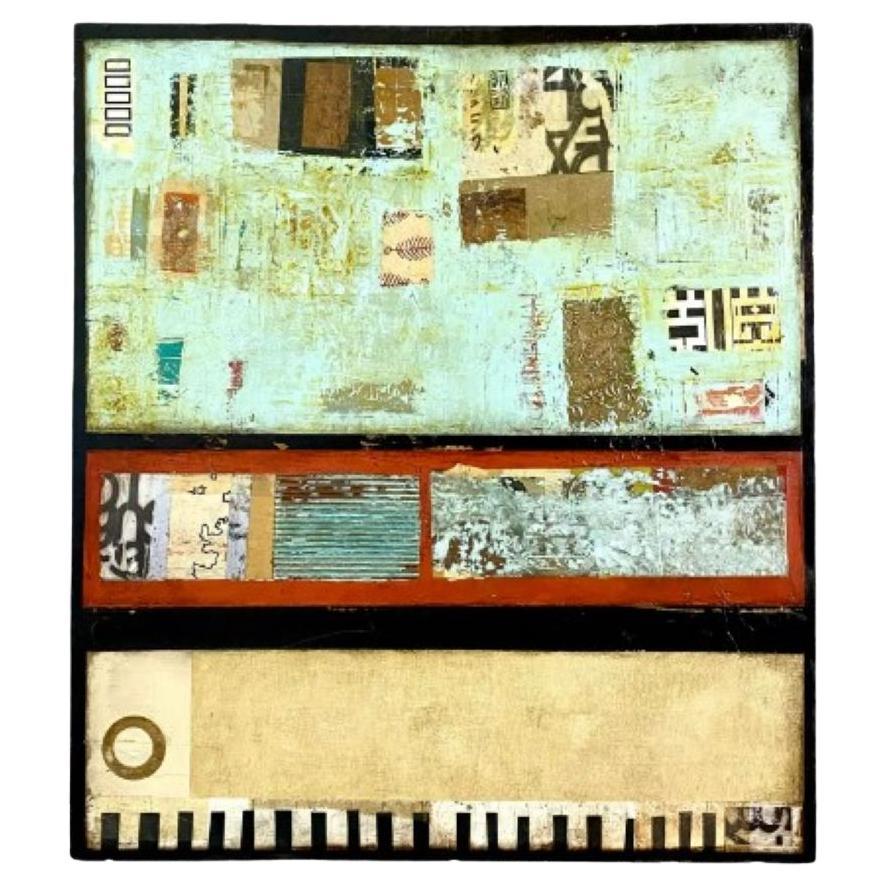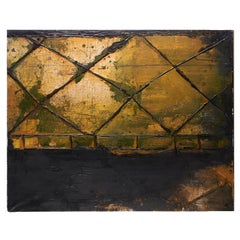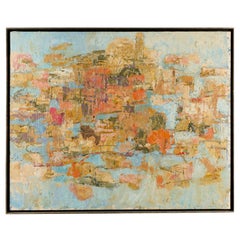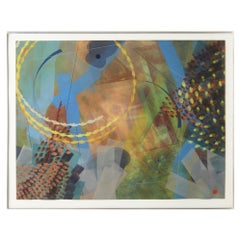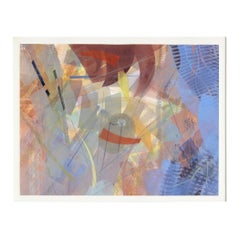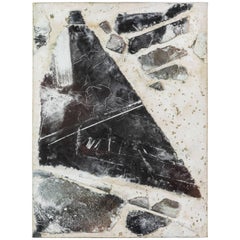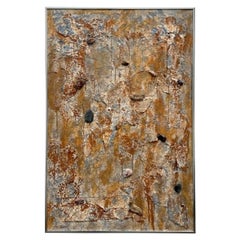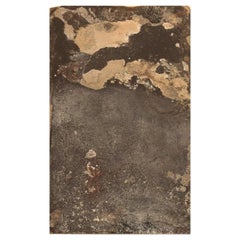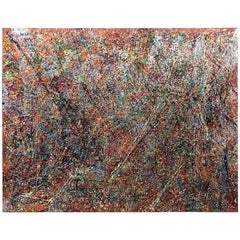Items Similar to Large Format Mixed Media Painting Strata XVII, 1992, by Alfonse Borysewicz, NYC
Want more images or videos?
Request additional images or videos from the seller
1 of 10
Large Format Mixed Media Painting Strata XVII, 1992, by Alfonse Borysewicz, NYC
$7,500
£5,660.04
€6,479.89
CA$10,577.49
A$11,612.76
CHF 6,058.40
MX$140,530.58
NOK 75,932.67
SEK 71,548.54
DKK 48,370.68
About the Item
Contemporary School (American, 20th c.), "Strata XVII', signed, titled and dated in pencil verso, unframed with canvas on wood stretchers. An abstract oil and wax work on linen.
Dimensions:
70"h x 83"w x 2"d
Condition:
Good. No visible condition issues observed.
About the Artist:
Alfonse Borysewicz (born April 27, 1957) is a Brooklyn-based painter. He received his B.A. from Sacred Heart Seminary and M.A. from St. John’s Provincial Seminary. He later attended the Studio School of the Museum of Fine Arts in Boston (1982–1984). He is the recipient of two fellowships from the Pollock-Krasner Foundation (1987, 1992) and a Guggenheim Fellowship (1995).
Gregory Wolfe, an editor at Image, calls Borysewicz "one of the most important religious artists since the French Catholic Georges Rouault. More than one critic has noted the influence of Cy Twombly, and one reviewer in particular, parallels with Jean-Michel Basquiat.
He has had solo shows at Richard Anderson Fine Art (1991-1999), Yoshii Gallery in New York and Tokyo (1993 and 1994), Simon Watson (1991), and Francine Seders (1999). Of his 1999 show at Richard Anderson, Jonathon Goodman of Art in America writes, “Borysewicz’s ability to invent a language of transcendence which is both traditional and of the moment makes him a compelling artist.” His paintings are primarily oil and wax on linen. The work develops through the physical act of painting. The accumulation of gestural and repetitive marks determines the surface pattern, density, texture, and vestigial imagery. The work draws the viewer into its interior space and invites a meditative response. This approach lends an earthiness which compliments the spiritual dimension but insists on the basic “humanness” of both belief and painting.
Collections include DeCordova Sculpture Park & Museum, Lincoln, MA,
General Electric, The Microsoft Art Collection, Redmond, WA, Pontifical Council for Culture, Vatican and Rose Art Museum, Brandeis University, Waltham, MA
- Dimensions:Height: 83 in (210.82 cm)Width: 70 in (177.8 cm)Depth: 2 in (5.08 cm)
- Style:Modern (Of the Period)
- Materials and Techniques:
- Place of Origin:
- Period:1990-1999
- Date of Manufacture:1992
- Condition:Wear consistent with age and use.
- Seller Location:Morristown, NJ
- Reference Number:1stDibs: LU5990240769152
About the Seller
5.0
Platinum Seller
Premium sellers with a 4.7+ rating and 24-hour response times
Established in 2020
1stDibs seller since 2021
225 sales on 1stDibs
Typical response time: 2 hours
- ShippingRetrieving quote...Shipping from: Morristown, NJ
- Return Policy
Authenticity Guarantee
In the unlikely event there’s an issue with an item’s authenticity, contact us within 1 year for a full refund. DetailsMoney-Back Guarantee
If your item is not as described, is damaged in transit, or does not arrive, contact us within 7 days for a full refund. Details24-Hour Cancellation
You have a 24-hour grace period in which to reconsider your purchase, with no questions asked.Vetted Professional Sellers
Our world-class sellers must adhere to strict standards for service and quality, maintaining the integrity of our listings.Price-Match Guarantee
If you find that a seller listed the same item for a lower price elsewhere, we’ll match it.Trusted Global Delivery
Our best-in-class carrier network provides specialized shipping options worldwide, including custom delivery.More From This Seller
View All1989 Spain Large Mixed Media Abstract Artwork by Vicenç Viaplana
Located in Morristown, NJ
Vicenc Viaplana (Spanish, b. 1955), , 1989, mixed media on canvas, unframed and on stretchers, signed "Viaplana" verso. A striking and abstract composition, showcasing the artist's e...
Category
Vintage 1980s Spanish Modern Contemporary Art
Materials
Canvas, Wood, Paint
1965 "Memory of Venice" Howard Baer Abstract Collage Oil Painting, Framed
By Howard Baer
Located in Morristown, NJ
Howard Baer (American, 1907-1986), oil and collage on canvas, "Memory of Venice" 1965, signed and dated lower right, titled canvas verso, slat frame.
Born in a mining town near Pi...
Category
Vintage 1960s American Mid-Century Modern Decorative Art
Materials
Canvas, Wood, Paint, Paper
Paul Garland, Large Steel Framed Colorful Abstract Monotype 1983
By Paul Garland
Located in Morristown, NJ
Paul Garland (American, b. 1943), an abstract composition, pencil signed and dated 1983. The work is very colorful with wonderful movement and expression. It has been expertly framed...
Category
Vintage 1980s American Modern Contemporary Art
Materials
Steel
Paul Garland, Large Steel Framed Colorful Abstract Monotype 1984
By Paul Garland
Located in Morristown, NJ
Paul Garland (American, b. 1943), an abstract composition, pencil signed and dated 1984. The work is very colorful with wonderful movement and expression. It has been expertly framed...
Category
Vintage 1980s American Modern Contemporary Art
Materials
Steel
20th C. Framed Modern School Abstract Gouache Depicting Geometric Shapes
Located in Morristown, NJ
Modern School (20th c.), an abstract, gouache on board, no signature visible. This is an abstract painting characterized by a mosaic of colorful geometric shapes. The composition is...
Category
Vintage 1980s American Modern Paintings
Materials
Glass, Wood, Masonite, Paint
1974 Acrylic on Canvas, Hector Ubertalli (American) Titled "Images - Japan 2"
Located in Morristown, NJ
Hector Ubertalli (American, b. 1928), "Images - Japan 2", 1974, acrylic on canvas, signed and dated lower right, titled with artist details on verso.
The painting depicts a serene, ...
Category
Vintage 1970s American Modern Paintings
Materials
Canvas, Acrylic, Wood
You May Also Like
Textured Mixed-Media Abstract Painting, 1990s
Located in Pasadena, CA
Modern and abstract are words that describe this stunning mixed media work from the 1990s. Done in a black and white palate the piece feels rather archaeo...
Category
1990s Paintings
Materials
Paint
Vintage Boho Abstract Mixed Media on Board
Located in West Palm Beach, FL
A Vintage Boho Abstract Mixed Media on Board would be a captivating fusion of the spontaneous, free-spirited nature of Bohemian style with the expressive and textured qualities of ab...
Category
Late 20th Century Bohemian Paintings
Materials
Canvas, Paint
William Beghin, French Artist, Oil on Board, Abstract Composition, Dated 1997
Located in København, Copenhagen
William Beghin, French artist. Oil on board.
Abstract composition.
Dated 1997.
Visible dimensions: 12.5 x 8 cm.
Total dimensions: 29 x 23 cm.
The frame measures: 2 cm.
In exc...
Category
1990s French Paintings
Materials
Other
Abstract #3 Mixed Medium Painting on Canvas by Luigi Cosentino
By Luigi Cosentino
Located in Montreal, QC
Abstract mixed medium painting, signed: Luigi Cosentino, titled “Abstract #03” and dated 2017, backside of the canvas, canvas size 48" x 60" x 1.5" pro...
Category
21st Century and Contemporary Modern Paintings
Materials
Paint
Contemporary Original Abstract Mixed Media Painting Signed Ricci
Located in West Palm Beach, FL
Gorgeous original abstract oil painting signed Ricci. A beautiful mixed media in a brilliant color combination. Signed on the back.
Category
Late 20th Century North American Paintings
Materials
Paint
Bernd Haussmann Modern Abstract Mixed-Media on Paper
By Bernd Haussmann
Located in Astoria, NY
Modern abstract untitled mixed-media on paper by German artist Bernd Haussmann (b. 1957) with flower motif in lower right corner. The piece is signed initialed and dated in the upper...
Category
1990s German Modern Paintings
Materials
Paper
$644 Sale Price
32% Off
More Ways To Browse
The Louvre Antiques
Theodore Tihansky
Theodore Turner
Thierry Bosquet
Thomas Barron
Thomas Casilear Cole
Tip Freeman Art
Travis Whiteneck
Trevor James Portrait
Trevor Jones
Turner Shadow Box
Used Furniture Winter Park
Val A Samuelson
Vern Broe
Victor Dupre
Vintage Ladies Hats 1940s
Vintage Velvet Painting Mexico
Viola Allen
